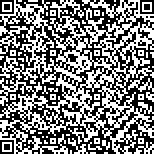本文已被:浏览 956次 下载 736次
投稿时间:2018-08-23 网络发布日期:2019-03-22
投稿时间:2018-08-23 网络发布日期:2019-03-22
中文摘要: 目的 探讨老年急性髓系白血病(AML)诱导治疗疗效与预后分析。方法 纳入对象为2014年1月至2016年1月治疗的120例老年AML患者,55例进行地西他滨联合减量化疗(地西他滨组),65例采用传统化疗(传统组)。记录所有患者化疗1个疗程以及两个疗程后的临床疗效;将治疗两个疗程后达到完全缓解(CR)的患者设为观察组,未达到CR的患者设为对照组,调查两组患者年龄、性别、合并疾病等基本资料,单因素分析影响老年AML 患者CR的影响因素,多因素Logistic回归分析其独立危险因素。结果 地西他滨组1疗程CR率为38.46%,两个疗程CR率为63.08%,传统组1疗程CR率为32.73%,两个疗程CR率为58.18%,地西他滨组与传统组各疗程CR、PR、NR差异均无统计学意义(P>0.05);单因素分析显示两组外周血原始细胞、白细胞计数(WBC)、年龄、染色体核型、fms样酪氨酸激酶 3(FLT3) 突变、NPM1突变差异具有统计学意义(P<0.05);多因素Logistic回归分析结果显示WBC>50×10^9(OR=2.212,95% CI:0.654~8.123)、年龄≥75岁(OR=1.875,95% CI:1.323~10.345)、外周血原始细胞≥50%(OR=2.116,95% CI:1.214~12.565)、骨髓原始细胞≥50%(OR=1.986,95% CI:1.054~9.543)、高危型染色体核(OR=2.656,95% CI:0.754~9.545)、FLT3突变(OR=2.212,95% CI:1.021~9.232)、NPM1突变(OR=2.332,95% CI:0.324~9.511)是影响老年AML 患者CR的独立危险因素。结论 老年AML 患者经诱导治疗后行地西他滨联合减量化疗疗效较优,WBC>50×10^9、年龄≥75岁、外周血原始细胞≥50%、骨髓原始细胞≥50%、高危型染色体核、FLT3突变、NPM1突变均可作为独立影响因素影响老年AML患者的预后。
Abstract:Objective To investigate the efficacy and prognosis of induction therapy for senile acute myeloid leukemia (AML). Methods Out of 120 elderly AML patients treated from January 2014 to January 2016, 55 cases received decitabine combined with reduced-dose chemotherapy regimen (decitabine group), and 65 cases received conventional chemotherapy regimen (traditional group).After one and two courses of chemotherapy, the clinical efficacy of all patients was recorded, and the patients who had reached complete remission (CR) were set up as observation group, and the patients who had not reached CR were set up as control group.The basic data of patients (including age, sex and combined disease, etc.)were observed in two groups.The factors affecting CR in elderly AML patients were analyzed by Univariate analysis, and the independent risk factors were analyzed by multivariate Logistic analysis. Results CR rate was 38.46% after one course and 64.08% after two courses respectively in decitabine group and 32.73% after one course and 58.18% after two courses respectively in traditional group.There were no significant difference in CR and PR between two courses (n>0.05).Univariate analysis showed that there were significant differences in bone marrow primordial cells, peripheral blood primitive cells, white blood cells count (WBC), age, chromosome karyotype, fms-like tyrosine kinase 3 (FLT3) mutation andnucleophosmin (NPM1) mutation between two groups (P<0.05).Multivariate Logistic regression analysis showed that WBC>50×109 (OR=2.212, 95%CI:0.654-8.123), age≥75 years (OR=1.875, 95%CI:1.323-10.345), peripheral blood primitive cells (OR=2.116, 95%CI:1.214-12.565), bone marrow primordial cells≥50% (OR=1.986, 95%CI:1.054-9.543), high-risk chromosome karyotype (OR=2.656, 95%CI:0.754-9.545), FLT3 gene mutation (OR=2.212, 95%CI:1.021-9.232) and NPM1 gene mutation (OR=2.332, 95%CI:0.324-9.511)were independent risk factors for CR in elderly AML patients. Conclusion Decitabine combined with reduced-dose chemotherapy after induction therapy has a better curative effect in elderly AML patients.[JP3]WBC count>50×109, age ≥75 years, both peripheral blood primitive cells and bone marrow primordial cells≥50%, high-risk karyotype, gene mutation of FLT3 and NPM1 could be the independent factors affecting the prognosis of elderly AML patients.
文章编号: 中图分类号:R 733.71 文献标志码:B
基金项目:
附件
| Author Name | Affiliation |
| XU Min, WU Xiao | Department of Hematology, Zhangjiagang First People′s Hospital, Suzhou, Jiangsu 215600, China |
引用文本:
徐敏,吴晓.老年急性髓系白血病诱导治疗疗效与预后分析[J].中国临床研究,2019,32(3):367-370.
徐敏,吴晓.老年急性髓系白血病诱导治疗疗效与预后分析[J].中国临床研究,2019,32(3):367-370.
